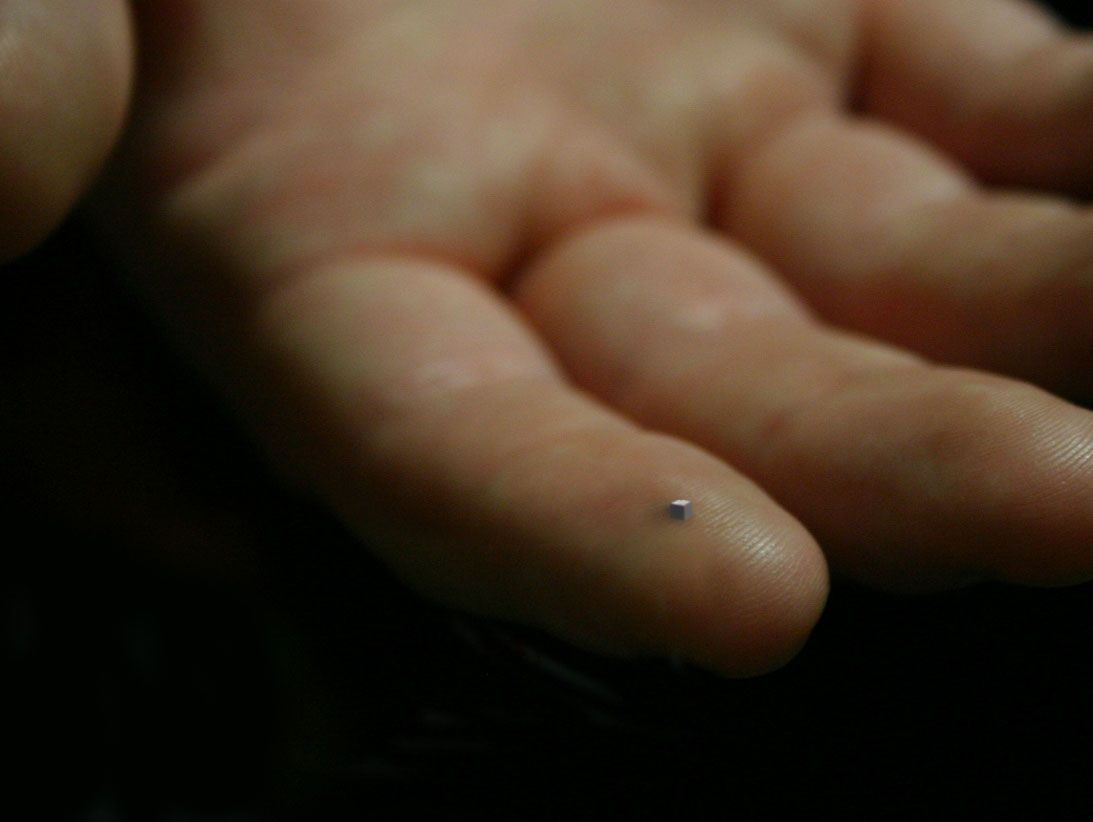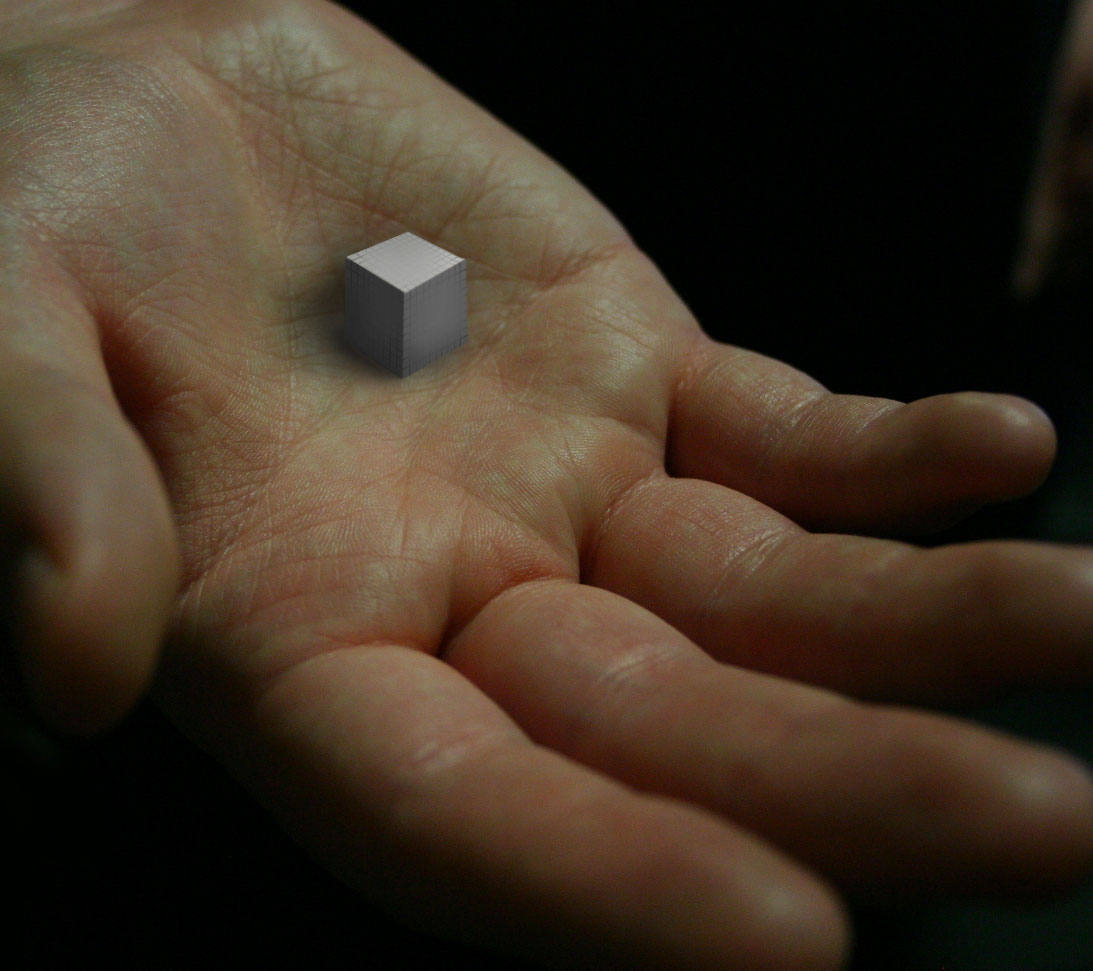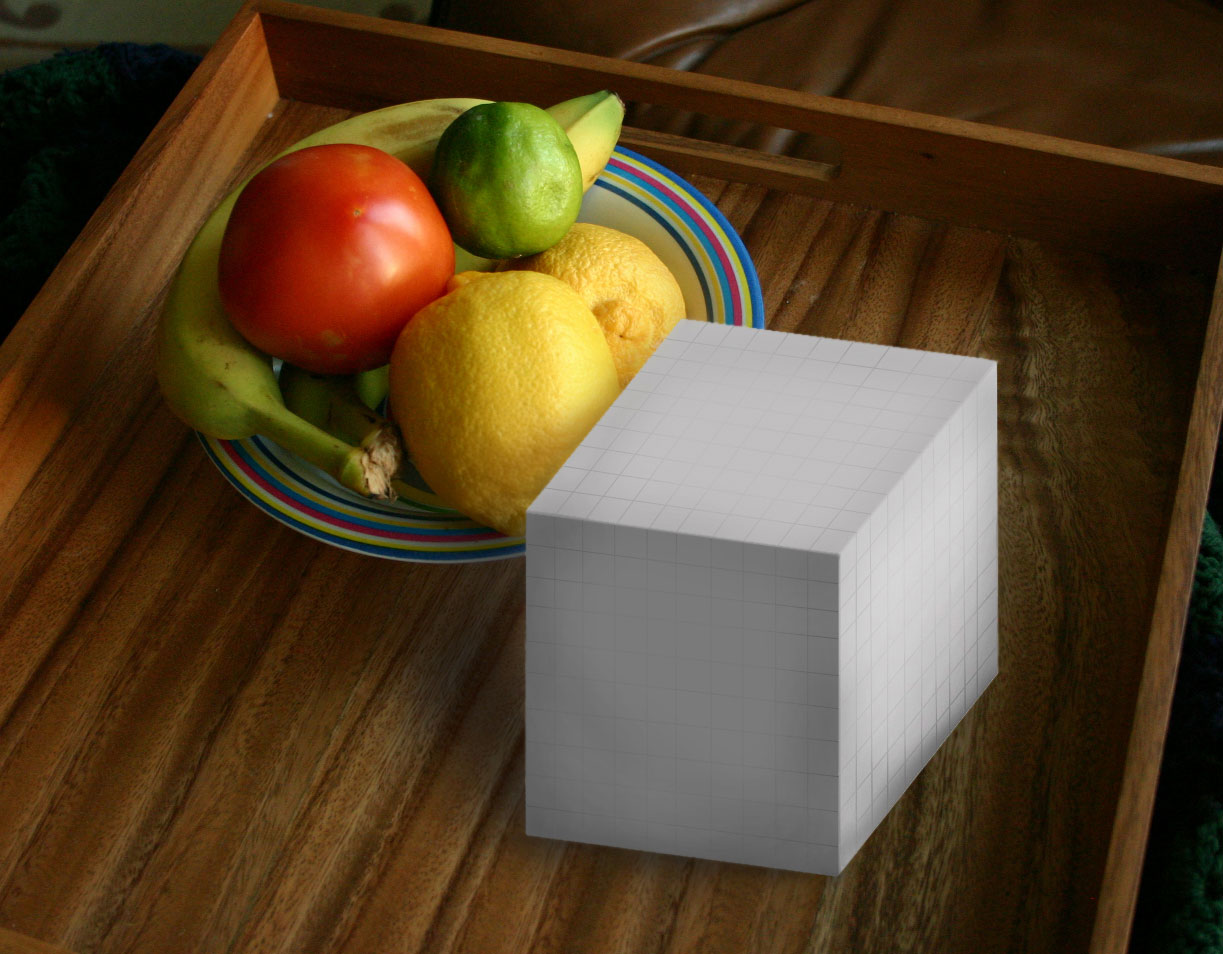One Quadrillion to scale .......
http://www.ignisfatuus.com/2010/08/27/a-quadrillion-to-scale/ August 27 , 2010
A Quadrillion, To Scale
By David Dick-Agnew
 f you’re like me — like most people — you probably have a hard time holding the concept of a quadrillion in your mind. Even a million is a little hard to wrap your head around. This means that when someone throws out the fact that Warren Buffett is sitting on $62 billion, or that the US debt is over $13 trillion, it’s more or less meaningless. How can we grasp the importance of these ideas if we can’t even comprehend their scale?
f you’re like me — like most people — you probably have a hard time holding the concept of a quadrillion in your mind. Even a million is a little hard to wrap your head around. This means that when someone throws out the fact that Warren Buffett is sitting on $62 billion, or that the US debt is over $13 trillion, it’s more or less meaningless. How can we grasp the importance of these ideas if we can’t even comprehend their scale?
To help to better visualize the relative weight of these amounts, I’ve thrown together this handy illustrated guide. The scale is more or less consistent, so walking through the next 6 images will hopefully show how these orders of magnitude stack up.
First off, 1:

For the purposes of this guide, 1 = 1 cubic millimeter. That’s less than 1/16″, for all you imperialists out there. Roughly the size of a grain of coarse sand, or a honeybee’s brain. Keep that in mind — that’s our basic unit of measurement.
To stack these little guys ten high, ten wide, and ten deep, it would take 1 thousand (1,000) of them (10 x 10 x 10, or 10³ if that helps). 1000 of these units would fit into a space the size of a sugar cube:

Most people measure their income in the scale of these sugar cubes. The average American, working full-time, pulls in about 40 of these a year. Not enough to make a single handful. Or, to look at it another way, this represents roughly the number of words it would take to replace this picture.
If you stack these sugar cubes 10 high, 10 wide, and 10 deep (which would take 1000 of them, or 100 x 100 x 100 of our original tiny single unit), you will have 1 million (1,000,000) of of the original unit of 1:

That’s roughly one for every person living in San Jose, America’s 10th most populous city. Still fits nicely on an average breakfast tray. But bearing in mind that it’s made up of bits the size of grains of sand — that’s still a lot of them.
Incidentally, this is also 1 liter in volume. Fill it with water and it will weigh 1 kilogram. Ah, the metric system!
To stack these 1-liter-sized cubes 10 by 10 by 10 would take 1 billion (1,000,000,000) of our basic 1mm³ units:

1 billion is how much it costs, in dollars, to buy approximately one third of a Virginia-class nuclear submarine. It’s how much money Avatar made (international box office gross) in only 17 days. Warren Buffett gave 37 of these to the Bill & Melinda Gates Foundation in 2006. But it would take the average American, working full-time, 25,000 years to earn just one of them (and it takes 1 year for Djibouti’s entire population of 864,000 people to do the same). It’s expected that next year, the world population will reach 7 billion; imagine 7 of these in a row, and there’ll be one grain of sand for every person alive. And it would take at least 20 of them to represent all the websites on the Internet.
If you could manage to find enough of these 1m³ cubes to stack them 10 high, 10 wide, and 10 deep, you’d be looking at 1 trillion (1,000,000,000,000) of our starting units:

Enough to cause some pretty bad traffic. This is getting up into the range of pure abstraction, and yet there are a few things we measure in the trillions. It would take 5 of these mammoth blocks to represent Japan’s GDP in a year. Australia’s would take just 1. America’s GDP would require 14, its debt would take 13, and its bank bailout 10. One of these could purchase all homes foreclosed in America in 2007 and 2008 combined.
It would take between 60 and 100 of these trillion-cubic-millimeter blocks to represent all the synapses in the human brain.
And it would take a whopping 200 of these massive blocks to represent every ant on Earth. And given that each ant is, on average, a little bigger than a large grain of sand, that means if you put all the ants on earth in a single place, these buildings — and these poor people — would be buried.
But it would take even more than 200 of these blocks — 5 times as many, to be exact — to reach 1 quadrillion (1,000,000,000,000,000):

This is a number so huge, it has basically no practical applications (unless you wanted to talk about the number of ants that lived in the past 2 and a half years). It would take between 2,500 and 10,000 galaxies like our own to total a quadrillion stars — maybe as much as a tenth of the surveyed universe.
The average American, working full-time, would have to work 250 million years to earn 1 quadrillion pennies. If you’d started when the continents still formed the single land-mass known as Pangaea, you’d just about be there by now. Of course, a quadrillion pennies would weigh 2,500,000 metric tonnes, equal in weight to Russia’s entire grain imports in 2010 — that would require a pretty big piggy bank.
Back to the human brain: it’s estimated that our synapses each fire about 300 to 400 times per second, but at peak moments they can fire as many as 1000 times a second. It’s impossible for every synapse to fire at the same time, but we can still calculate the upper limit of possible brain events per second. Given the estimate of 60 to 100 trillion synapses, that means it would take between 18 and 100 of these mammoth, skyscraper-sized blocks to represent the range in the number of events the human brain is capable of sustaining in a single second. That’s a whole city! And in 10 seconds? That’s right: it would take up to 1,000 of them — 1 quintillion (1,000,000,000,000,000,000) mm³ in total. Now if that doesn’t beat all.
http://www.silverdoctors.com/jim-sinclair-imf-states-entire-derivatives-market-is-a-wmd-time-bomb/#more-19636
JIM SINCLAIR: IMF STATES ENTIRE DERIVATIVES MARKET IS A WMD TIME BOMB
 Gold and derivatives expert Jim Sinclair has sent subscribers an alert this morning warning on the severity of the global derivatives market, which Sinclair has dubbed the Global Derivative Graveyard Problem.
Gold and derivatives expert Jim Sinclair has sent subscribers an alert this morning warning on the severity of the global derivatives market, which Sinclair has dubbed the Global Derivative Graveyard Problem. The IMF, which currently estimates the global derivatives market to be approximately $600 trillion (rather than the true $1.26 QUADRILLION notional), has come out and stated that the entire derivatives market is a WMD time bomb.
From Jim Sinclair:
Here is the recent IMF conclusion on page #47 & #48 on the potential still remaining in the OTC derivative graveyard. This is not from me, but rather from the establishment itself.The number the IMF is using is way below the huge number of the global problem, and still they conclude that the derivative market is a world class WMD time bomb.The following is courtesy of CIGA DC browsing on our behalf. This should be a huge concern to any analyst with their eyes open.Respectfully,
JimDefinitions:TITF – Too Important to Fail RiskSIFI – Systemically Important Financial Institution RiskTopology (from the Greek τόπος, “place”, and λόγος, “study”) – A major area of mathematics concerned with the most basic properties of space, such as connectedness. (wikipedia)
VI. CONCLUSIONA major hallmark of SIFIs is their activity in financial derivatives markets. The analysis of this paper has one clear message. The global derivatives markets in the post Lehman period, despite considerable compression of bilateral positions, are unstable and they can bring about catastrophic failure. Quite simply, a threat of failure to any of the SIFIs is an immediate threat to the others. The network topology where the very high percentage of exposures is concentrated among a few highly interconnected banks implies that they will stand and fall together. This topological fragility of the derivatives markets as risk sharing institutions has an implicit moral hazard problem that undermines their social usefulness. The empirically calibrated network for derivatives liabilities manifests a highly clustered core- periphery structure and extreme form of TITF as seen in Figures 5.a- 5.f. The implied socialized losses are very large (to the tune of US$350 billion) and the liabilities arising from extant derivatives network structures cannot be supported by the existing capital base. The good news is that the highly clustered network structure permits targeted management of systemic risk. One of the main contributions of the paper is to use network analysis to design a set of surcharges that will enable the SIFIs in the derivatives markets to internalize the costs imposed on other FIs and also the tax payer by their failure.
and might Warren Buffet be the kindly ole country squire who takes out JP Morgan silver short ? To build this project , Warren will need to buy lots of silver ......
WARREN BUFFET TO RE-ENTER SILVER MARKET, BUILD WORLD’S LARGEST SOLAR PROJECT

Could buffet be attempting to re-enter the silver market, under the cover of solar energy? MidAmerican Energy Holdings, a subsidiary of Berkshire Hathaway has announced a deal with SunPower to build two solar projects in California’s Antelope Valley totaling $2.5 billion- the largest solar project in history.
Perhaps our friend Blythe should take notice that production is scheduled to begin Q1 2013.
WARREN BUFFETT TO BUILD WORLD’S LARGEST SOLAR ENERGY PROJECT
BILLIONAIRE US INVESTOR WARREN BUFFETT IS TAKING A $2.5BN (£1.5BN) BET ON SOLAR ENERGY, ACQUIRING WHAT IS SET TO BECOME THE LARGEST PHOTOVOLTAIC DEVELOPMENT IN THE WORLD.
MidAmerican Energy Holdings, a subsidiary of Mr Buffett’s Berkshire Hathaway investment company, has struck a deal with SunPower to acquire and build two projects in California’s Antelope Valley.
The deal, which will see MidAmerican pay between $2bn to $2.5bn, marks the third time in little over a year that Mr Buffett has ploughed cash into solar energy.
He last year created a unit within Mid American to support an increasing number of solar and wind investments.
Work on the projects will begin within the next few months and construction is expected to be completed by the end of 2015…
The two projects acquired by MidAmerican will have a combined capacity of 579 megawatts (MW), creating the largest solar photovoltaic power development in the world.
and discussion of silver used in solar panels...........
http://www.kitco.com/reports/KitcoNews20101119AS_silver.html
 | Rising Solar-Panel Generation Means Increasing Industrial Demand For Silver |
(Kitco News) - The sun is adding some shine to the silver market.
One of the growing industrial uses for silver is photovoltaic cells in solar panels as the world seeks alternative forms of energy, metal consultancies said. There has been a jump in such demand in recent years, and analysts said millions more ounces of silver may be consumed for this over the next decade.
“Solar panels will probably be one of the leading industrial uses,” said Jessica Cross, CEO of VM Group.
Use of the long-established photovoltaic technology, referred to as PV, “really took” off in the last half decade, helped by government subsidies, said Philip Newman, research director for GFMS.
“The growth in demand did not primarily come about because of technological developments,” he said. “It came about because of changing attitudes of governments and government policy.”
Ultimately, the amount of silver used will hinge on growth that emerges in the PV solar market. This will depend on both future government support, as well as technology innovations that bring down the cost of solar power, said Erica Rannestad, commodities analyst with CPM Group. As it is, the cost for a typical PV module fell by around 40% in 2009 from mid-2008, she said, citing data from the trade group Solar Energy Industries Association.
One of the most popular government programs is a “feed-in tariff” mechanism in which electrical-grid operators pay producers of renewable energy long-term fixed prices for energy they feed into the grid. This originated in Germany and is especially popular in Europe, Rannestad said.
Any government policies calling for more renewable energy are likely to boost demand for solar cells. Europe is pushing for renewable energy to amount to 20% of total energy consumption by 2020, compared to around 10% in 2008, Rannestad said. “I expect new installations of solar panels to continue to rise on an annual basis,” she said.
Globally, solar-panel installations during 2009 meant 7.2 gigawatts of new electrical capacity, Rannestad said. (A gigawatt equals 1 billion watts.) Industry estimates suggest newly installed capacity will more than double to 16.5 gigawatts in 2010, Rannestad said. This may rise to 23.3 gigawatts by 2013 and 40.9 gigawatts by 2019.
German, Spain and Japan are the leaders in existing PV solar power generation, said Monique Hanis, spokeswoman for SEIA. The U.S. is No. 4. “But everybody is really eyeing the U.S. market because it perhaps has the greatest potential in terms of solar resources and demand,” she said.
India plans to up solar output to 20 gigawatts by 2020 from virtually zero now, while China aims to raise capacity from 5.5 to 30 gigawatts by then, said VM Group.
“We definitely see the solar market growing quite substantially,” said Rob Cockerill, North American PV segment manager with DuPont Microcircuit Materials. DuPont is a material supplier for the solar industry.
Silver Consumption To Rise As Solar-Energy Market Grows
Solar power is generated in PV technology when a silicon wafer converts incoming photons of light into electrical current, Cockerill said. Silver helps collect electrons for the current and transports them out of the module for use as power. A typical solar panel has about 20 grams of silver, he said. This is around two-thirds of a troy ounce.
“Silver fabrication will grow as the (solar-energy) market grows,” Rannestad said.
CPM Group estimates that 2010 use of silver in solar cells will be 64 million ounces, up from 20.9 million in 2009. Rannestad looks for 15% compounded annual growth from 2009 to 2019, with the amount of silver used for solar cells forecast to rise to 84.5 million ounces over the next 10 years.
VM Group’s Silver Survey, published earlier this year, called for compounded annual growth of 17.5% for silver use in solar panels over the next decade. VM Group estimated 18 million ounces of silver were used in 2009. This is likely to rise to as much as 70 million by 2020, even when factoring in some impact from a rising market share for “thin-film” technology that requires little silver. Furthermore, VM said, still more silver also will be used for reflective mirrors in solar-power-concentrator power plants, perhaps rising to 60 million ounces per year over the next decade.
In its Silver Survey earlier this year, GFMS estimated that PV-cell production rose 30% last year to 28 million ounces of silver. The growth doubled from 2008, and GFMS also looks for “fairly aggressive growth rates this year,” Newman said.
While more growth can be expected, the rate may moderate, he said. Percentage gains may slow simply as the industry becomes more mature, especially if government subsidies are scaled back, Newman said. Yet, demand could be encouraged if manufacturing costs fall, other energy prices surge again or another country institutes a new subsidy.
Cross said silver also will benefit from limited recycling of the metal from solar panels compared to other uses such as photography. Plus, any such recycling may not occur for a while. Most solar panels have a warranty for 25 years, Cockerill said.
Still, not all are convinced of the future silver demand for solar panels. “I don’t see it becoming a major market for silver,” said Jeffrey R. Ellis, senior technology consultant to the Silver Institute and adjunct professor of environmental science and chemistry at Florida International University.
Silver traditionally is used in the infancy of many new electronic products to gain efficiency. But once the rest of the products become more efficient, there can be a tendency to shift toward cheaper metals such as copper or a silver alloy, meaning less use of pure silver, Ellis said. Furthermore, he questioned how popular solar panels will become. “It seems like it’s the technology of the future and always will be,” he said.
“Thick-Film” Technology Using Silver Remains Dominant
There are two kinds of solar panels. The traditional “thick-film” technology has crystalline silicon cells that use silver to help convert light energy into electricity. However, newer, less-expensive “thin-film” technology uses other materials, such as cadmium telluride. Solar panels for both also use silver outside of the cells for reflectivity and other functions, Rannestad explained.
Still, the thick-film technology is considered more efficient in capturing energy. Analysts say it has a roughly 80% to 90% market share, although thin-film may gain in market share. “We are going to see growth in both segments,” Haas said.
Nevertheless, with the gains by thin film, if the overall solar industry doubles, silver consumption will maybe increase by 1 ½ times, Cockerill said.
“The future for crystalline silicon (thick film) is market growth (that will be) definitely higher than any market-share erosion silicon will see in the next five years,” he said. “Beyond that, it’s hard to say what kind of disruptive technologies might emerge.”
|

No comments:
Post a Comment